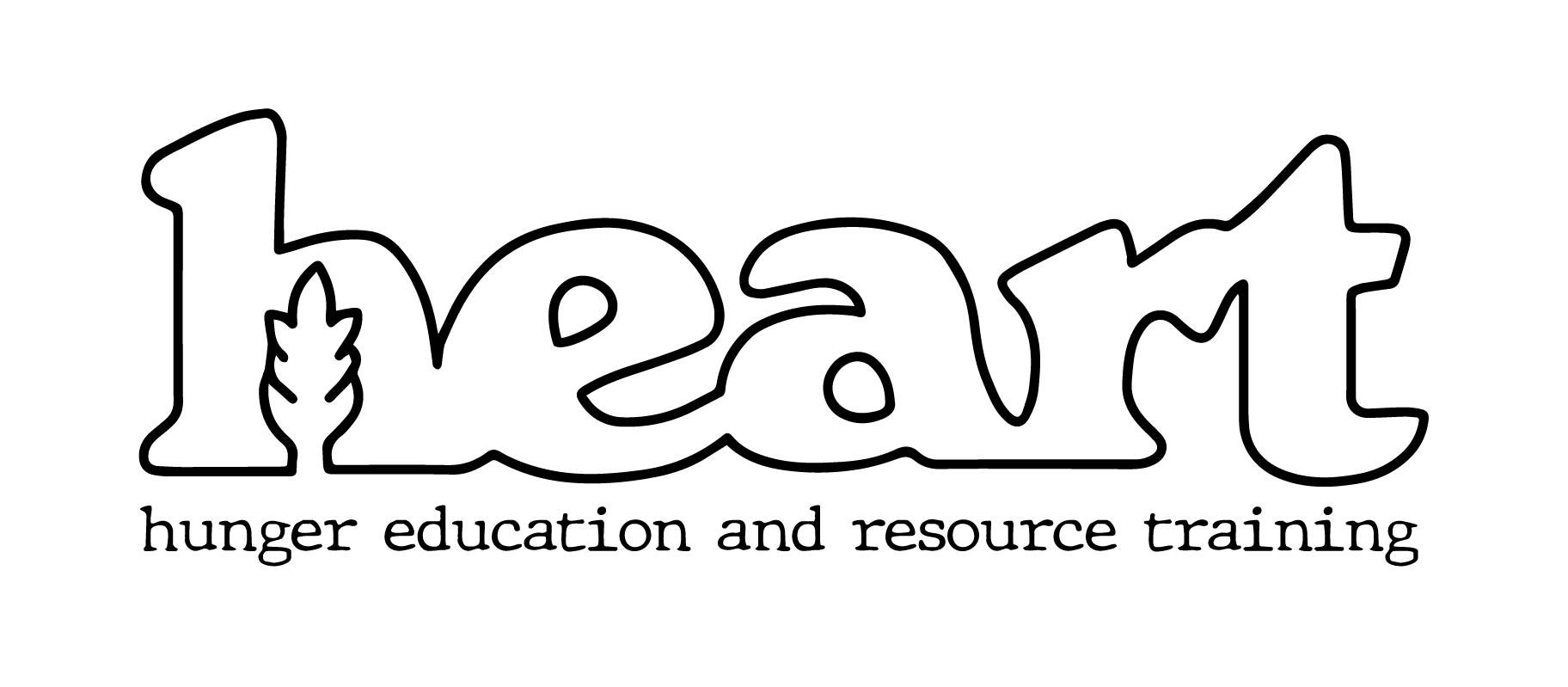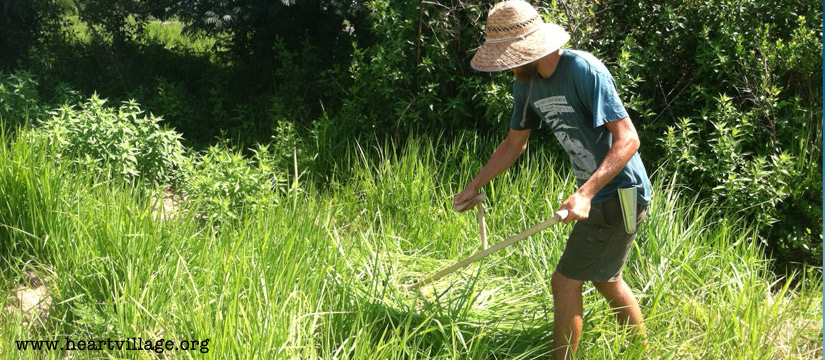One of our guiding farming principles at HEART is the stewardship of soil through building healthy microbial populations and increasing soil organic matter content.
The degradation of soil is one of the key contributing factors to global hunger and all initiatives to alleviate hunger should have a soil-based solution approach.
The key technique we use to foster soil life and increase organic matter is the generous usage of mulches. Mulches are any dead plant material (and sometimes non-plant material) laid on the ground where crops are being grown. Mulch benefits the garden in terms of moisture retention and weed suppression while decomposing and contributing to the long-term health of the soil. In our annual garden systems we have a strong preference for heavy layers of grassy mulch like hay or straw. The problem with this is that we often find ourselves purchasing or otherwise importing these materials from other properties. Students often ask “how would I get this in the country where I am going to serve?” and I find myself wondering that same question. The grass has to come from somewhere and the reality is that if the poor wish to farm in this way they must gather the material for themselves. This brings me to the subject matter of this article: the scythe.

Josh harvests an invasive grass with the scythe.
The scythe is an elegant tool used for cutting grass that has a long and fascinating tradition in European countries. I recently purchased a European scythe and it is quickly transforming our farming systems at HEART. The scythe is custom made to my body and the blade is field sharpened every few minutes to keep it razor sharp. The sharpness of the blade allows it to glide through grass effortlessly, providing us with the material of mulch. This scythe should be distinguished from American style scythes, which are bulky and are cumbersome to work with. European scythes have malleable blades that can be made incredibly sharp and are a pleasure to work with.

Josh field sharpens the scythe. A razor sharp edge is what enables
the blade to glide effortlessly through the grass.
I have discovered several large patches of Cogon grass (Imperata cylindrica) within walking distance of our gardens or a short drive in our work cart. Cogon grass is considered one of the world’s most annoying and aggressive weeds. However, we have found that it makes beautiful and functional garden mulch that does not root or spread when laid down. Through the use of the scythe we can turn this invasive weed into a functional benefit to our farm. In 15-20 minutes two of us can cut enough mulch for a 4’ x ’40 garden bed for a whole season. One person cuts while the other piles the mulch into the cart with a pitchfork. We stop every 5 minutes or so to sharpen the blade, just about when one is ready for a breather.

20 minutes of labor with the scythe produces enough mulch for an entire
season for a 4′ x 40′ garden bed.
Utilizing this grass is a special demonstration because it teaches students to value what is considered waste and turn it into a resource to improve food production.
While many use herbicide sprays to try to eliminate this grass, we will glean from it’s presence and feed ourselves from the land. Everywhere around the world has some sort of waste product that is waiting to be turned into a valuable resource through perspective transformation. The scythe is an appropriate technology that allows us to efficiently gather the mulch using no energy other than calories.
High quality European scythes are quite expensive in the United States ($200 for the full setup) but this could open up opportunity for local production of similar tools in developing countries and give skilled individuals a way to make a living. The difference between using a machete and a fine tuned scythe for cutting is night and day.

Annual beds are heavily mulched with the “weeds” harvested with the scythe.
This whole discussion is a microcosm of a greater principle. Materials viewed with scorn or indifference (read “weeds”) often have immense value when coupled with wise farming techniques, appropriate technologies and a resourceful approach.


